Technical Service Core
The Technical Services Core (TSC) provides advanced computer programming support for real-time applications, electronics design and fabrication, custom EEG recording and analysis software, and web development and maintenance support for the faculty and students of the CVCN, for the Department of Psychology, for NDSU as a whole, for visual and cognitive neuroscience researchers in the region, and for COBRE investigators in other IDeA states. The TSC also includes two subcomponents: Electro-Optical Instrumentation and Eye Tacking. The TSC is comprised of four key personnel, including the Core Director, Dr. Mark McCourt (PI/PD). The sta are Huanzhong Gu, M.S. (Senior Software Engineer), Enrique Alvarez Vazquez, M.S. (Electronics and Software Engineer), and Ganesh Padmanabhan, B.S. (Software Engineer). Advancing knowledge in modern systems neuroscience requires intimate familiarity with computers, stimulus presentation and response collection devices, calibration equipment, and software tools. The TSC makes an essential contribution to nearly every project that CVCN researchers have conducted (over 450 projects which have resulted in 142 cited peer-reviewed publications). The TSC advertises the availability of the programming and engineering services that they provide, and consult with prospective users concerning how their needs might be accommodated on a fee-for-service or fee-waived basis. Below is a list of the technical services that can be provided to users:
Matlab
- General Topics (Basic Arithmetic Operators, Matrix and Vector, Matlab Graphics, Matlab Functions and Procedures, Loops and Conditional Statements, Read and Write Files, Data Handling, Advanced Data Structures)
- Advanced Topics (EEGLab and ERPLab, Interface with External Devices [USB, Parallel, or Serial], Data Acquisition, Signal Processing, Image Processing, Statistics and Machine Learning, Bayesian Statistics, Psychometric Functions, Application Deployment, Customized Mex Functions for Matlab in C++) Stimulus Delivery and Experimental Control Applications for Neuroscience
- Presentation & EPrime (Simple and Complex Psychophysics Experiment Development, Interface with Eye-Tracker, EEG system, and Stereoscopic Screen, Fine Tuning Timing Issues Associated with Visual, Auditory, and ADC stimuli, E cient Data Logging, External Device Interfacing, Write Customized Extension for Presentation in C++)
- PsychToolbox/Matlab (Simple Stimulus Presentation, Advanced Stimulus Presentation and Timing, OpenGL based 3D stimulus Presentation, OpenGL Shading Language, Stereoscopic Stimulus Presentation, External Devices, Interfaces Including Eye-Trackers, Display++/Bit+ Displays, Touch Screen Displays, Display Calibration Devices, Data Acquisition Devices, and High Dynamic Range Displays, Adaptive Psychometric Methods)
- Cambridge ViSaGe MKII Stimulus Generator (Stimulus Presentation Using Matlab based Interface, Interface with External Data Collection Equipment, Eye Trackers, Motion Trackers, and Electrophysiological Ampli ers, Display Calibrations)
- PsychoPy/ Python (General purpose stimulus generation and delivery) Object Oriented Programming
- Java, C++, C# .Net Applications, Web Applications, C, Python Mobile Device Applications
- Android (Java and Google APIs, Eclipse ADT [Android Development Tool], Android Studio, Device Emulator, Real Time Debugging)
- iOS (Apple IOS SDK, XCode for iPhone and iPad Applications, Texture and Sprite Concepts, 2D and 3D Game Designs, Device Emulators, Data Collection, Packaging and Deployment Without AppStore) Electro-Optical Instrumentation
- Electronics (Electronics theory to actual circuit implementation, Power consumption of devices, Hardware and Software System requirements, Biomedical devices)
- PCB designing with PSPICE, Eagle CADSOFT (Schematic design, Board design, Solving inconsistencies [ERC – electrical rule check], Good habits when designing PCBs, PCB production process [milling, etching, conductive ink])
- Embedded systems (Applications using Arduino or other microcontrollers [MicroChip, Motorola, TXN, Renesas], Low level encoding [C, Wire-C, PICC, Assembler], Open source hardware vs proprietary, Design and implementation of biomedical systems using microcontrollers)
- 3D printing (Designing a piece in 3D modeling software, Creating G-code to render the model, Detail procedure to print a 3D model in PLA, Makerbot and Wanhao real time implementation)
- CNC machines (Modeling in CNC milling software, Interface PROBOTIX CNC Router, Linux CNC, CAM software)
- 3D modeling of mechanical pieces in SolidWorks
- Display Calibrations and Light Measurement (Computer Monitor Characteristics and Calibrations, Camera Calibration, Light Measurement Devices, High-Dynamic Range Luminance Images Calibrations, Experiment Stimulus Timing Measurements)
- Eye-Trackers (Fundamentals of Eye Tracking, Setup and Data Acquisition with Eye Trackers in Presentation, Matlab, or EPrime, Post Data Processing for Eye Position and Pupil Size, Recreation of Experiment Conditions Overlaid with Eye Position, Create Customized Eye-Tracker Extensions in C++)
- Virtual Reality (Simple Experiments with Immersive VR [HMD, glove, or tactile unit] using Vizard, Creating Immersive Environments in Vizard using Stereo-Panoramic Photography)
- Driving Simulator (Introduction of Driving Simulator Concepts, Operations of DriveSafety DS-600c Driving Simulator, Programming Scenarios and Acquiring Relevant Data, Basic Troubleshooting) Electroencephalography (EEG)
- Acquisition of EEG Signals, Understanding Ampli cation of the EEG Signal, Response Logging and Triggering for Biosemi System, Con guration Files in Biosemi Software, Battery Testing, EEG Chamber System Wiring, Wired and Wireless EEG devices, Dry/Wet EEG systems, Electrode Troubleshooting and Cleaning, EEG Signal Processing in Matlab and BESA, Source Localization Techniques, Time-Frequency Analyses
Eye Tracking Subcomponent
This collection of instruments facilitates the conduct of cognitive, psychophysical and electrophysiological research using eyetracking and pupilometric methods. The Eye Tracking Component of the Technical Services Core is a distributed collection of research instruments available for general use rather than a centralized common- use instrument. This Core Component is started by the Technical Services Core Facility. The eye trackers for use within this research facility include:
- Two Eyelink 1000 video-based eye trackers with a sampling rate up to 1000 Hz. These are cutting-edge instruments that perform real-time eyetracking with exceptional spatial resolution. The Eyelink 1000 Tower mount incorporates the camera and illuminator housing within a combined chin and forehead rest with the use of an infrared reflective mirror. A display computer is equipped with applications for stimulus display, data file viewing and the creation of experimental paradigms; a host computer runs controls the operation of the eyetrackers itself. The Eyelink 1000 has a resolution of 0.01° and an average error of less than 0.5°.
- A FaceLAB (Seeing Machines, Inc.) eye tracker is installed in the DS-600c driving simulator. This device tracks head and eye movements at a rate of 60 Hz, enabling the collection of point-of-regard data while also allowing considerable freedom of movement (head rotation up to 90° is permissible, as is translation up to 13" horizontally and 9" vertically). The FaceLAB eyetracker has an average gaze position error of less than 1°.
- A Tobii X120 eye tracking unit that allows for large head movements (12" x 9" x 12"), providing a distraction- free test environment that ensures natural behavior, and therefore valid results. It has a sampling rate of 120 Hz and provides spatial resolution of 0.3° and an average error of 0.5°. The binocular eye tracking capability allows for studies of individual eyes' movements.
- A EyeFollower (LC Technologies, Inc.) provides subjects with the largest amount of free head movement (30" x 20" x 24") of any remote eye tracker. It automatically locates, focuses, and tracks the users with no time consuming adjustments or re-calibrations. It is highly accurate (0.4°) and tolerant to many variations, such as pupil drift and head range movment.
 |
 |
 |
 |
Eye tracking is an essential tecnhology for visual and cognitive neuroscience. Three types of eye movements are of interest include: high-velocity (saccadic) eye movements which abruptly change point of regard; slow-velocity (pursuit) eye movements that maintain stable fixation with movements of the observer or object of regard; and stable fixation itself, with no movement of the eyes, the observer, or the point of regard. Specific research questions dictate the appropriate type of eye monitoring. Studies requiring observers to make particular eye movements must ensure that observers comply with experimental demands, and studies requiring precise stimulus location require knowledge of where the fovea is directed with respect to stimuli. A large proportion of projects by CVCN researchers require the sophisticated eyetracking technology provided by this Core Facility.
 |
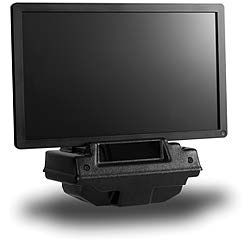 |
Electro-Optical Instrumentation Subcomponent
Research in visual and cognitive neuroscience demands precise calibration of stimulus delivery devices and response collection systems. Because our research is often on the cutting edge of technology we must often design and fabricate custom stimulus delivery and response collection hardware/software to accomplish our experimental objectives. Meeting this critical need, the CVCN TSC includes an Electro-Optical Instrumentation Component to provide CVCN researcherss and other members of the department and campus community, access to essential calibration and fabrication instrumentation to support their research programs. The Electro-Optical Instrumentation Core Component is a collection of research instruments available for general use. Instruments available include:
| • Konica-Minolta luminance meter (LS-110). High sensitivity spot photometer used for measuring the luminance of emissive or reflective sources. |  |
| • PR-650 SpectraColorimeter (PhotoResearch, Inc.). This instrument, calibrated to NIST standards, enables spectroradiometric and colorimetric calibration of emissive and reflective displays. |  |
| • Two high-end digital cameras (Canon EOS-1D Mark II; Nikon D3) calibrated to perform megapixel photometry/ colorimetry. |  |
| • Casio High Speed Exilim Ex-zr100 digital camera. Capable of taking video at a frame rate of 1000 Hz. Facilitates measurement and calibration of the temporal characteristics of stimuli presented on visual displays. |  |
| • Minolta VIVID 9i high precision 3D laser range finder. Because the process of visual perception involves constructing internal models of 3D scenes from 2D retinal images, this laser range finder (and associated software) measures depth relationships in 3D scenes, enabling the acquisition of “ground truth” in studies of depth and distance perception. | 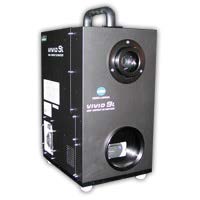 |
| • VariSpec Liquid Crystal Tunable Spectral Filter. Computer-controlled tunable interference filter providing selection of monochromatic light (10 nm passband) in the visible and near-infrared wavelengths. In combination with a high-intensity xenon light source the VariSpec serves as a monochromator; mounted in the optics of calibrated digital cameras it allows the acquisition of hyperspectral HDR images.. | 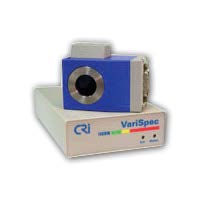 |
| • Extech 407764 Datalogging Sound Level Meter. This device is a type 2 SPL meter with an RS232 interface for computer control and datalogging. | |
| • Protek B803 Sweep Function Generator. This is a 2 MHz bandwidth function generator with less than 2% total harmonic distortion. |  |
| • Instek GDS-820S 150 Mhz Digital Storage Oscilloscope. A 150 MHz bandwidth storage oscilloscope with a 25Gsa/s sampling rate and FFT analysis capabilities. |  |
| • B+K Precision model 2120B dual trace oscilloscope (30 MHz bandwidth). CircuitSpecialists CSI 825A SMD Rework station. Microprocessor controlled assembly and rework station for surface-mount electronics. |  |
| • CircuitSpecialists CSI 825A SMD Rework station. Microprocessor controlled assembly and rework station for surface-mount electronics.. | 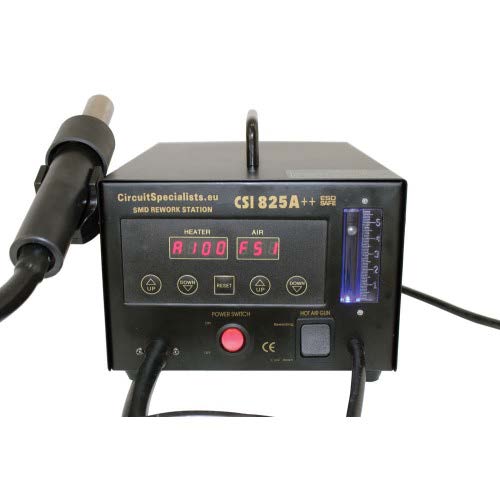 |
| • CircuitSpecialists CSI474 thermostatically controlled desoldering station. Permits repair and rework of custom-built through-hole electronics. | 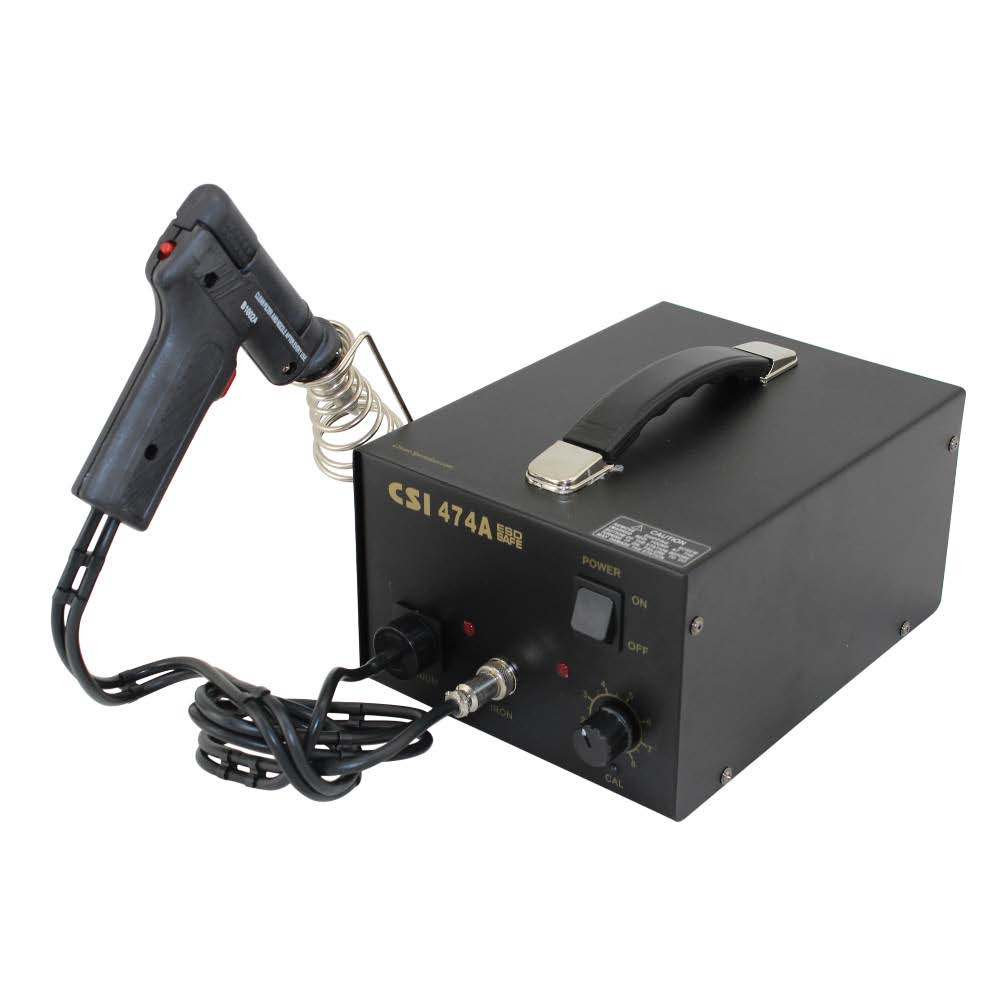 |
| • CircuitSpecialists CSI 3005X5. A high-stability regulated DC benchtop power supply for powering and testing electronic circuits. |  |
| • FireBall V90 CNC Router. A high performance computer controlled shaping machine capable of making custom hardware as well as in-house printed circuit boards. |  |
